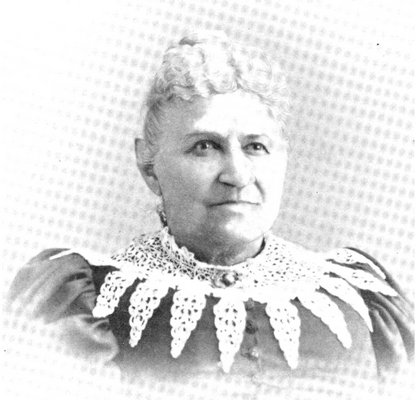
In what’s being called “The Year of the Whale,” the Southampton Historical Museum is launching a nine-month exhibition, beginning on Saturday, dedicated to whaling captains, their families, whalers and the industry they served.
Titled “Hunting the Whale: The Rise and the Fall of a Southampton Industry,” the exhibition is the vision of Emma Ballou, the museum’s curator and registrar, and will utilize both the Rogers Mansion and the Sayre Barn on the museum grounds.
“Ever since I got here, I have been fascinated with our whaling collection. We have a great, very big number of objects having to do with Southampton whalers and just whaling artifacts,” Ms. Ballou said. “They have always been kind of sectioned off in the red barn, the Nugent carriage house. They are pushed off to the side—it’s not open to the public, and people can’t see it.”
Ms. Ballou said the exhibit had been created in the 1950s by the Southampton Colonial Society. “It’s a very old exhibit that has not been touched pretty much since the ’50s,” she said. “It hasn’t been on view for decades, and I just thought that was such a shame. Our logo has a whale in it, but we don’t really have anything on display that’s really whaling. The Rogers Mansion is an 1843 whaling captain’s mansion, but besides that we really didn’t touch upon anything in the museum that really highlighted whaling.”
In the main gallery of the museum, the exhibition will concentrate on the human element of whaling, focusing on the people whose lives were entwined with the industry—how they lived, and how whaling changed their lives.
“The display is all about the people—the people who were living here, the people who went on the whaling voyages, the whaling captains, their wives, their children, what daily life was like,” she said. “How did they exist in this community during that time? It’s going to be very graphically based, with images, drawings, a lot of artwork, and also will display some of the more delicate objects of artwork, scrimshaw.
“I think a lot of people are interested in that when they come to a museum—they don’t necessarily want to see a bunch of stuff. They want to try and really know and connect with the people that were living in that time period,” Ms. Ballou said.
The display will focus on 10 Southamptonites who were involved in the whaling industry, including Caroline Rose, who accompanied her husband, Jetur Rose, on whaling voyages, and prominent African-American whaler Pyrrhus Concer, whose legendary voyage on the whaling ship Manhattan with Captain Mercator Cooper, who also is one of the featured 10 in the exhibition, took them to Japan, which had been closed to foreigners.
The exhibition also provides some insight at to why so many whaling captains lived in Southampton rather than the actual physical center of whaling on the East End at that time, Sag Harbor.
“Everybody thinks of Sag Harbor as the whaling port, which it was, but I was always kind of curious of where did Southampton stand in that?” Ms. Ballou said. “In doing some research, we kind of discovered that Southampton was an early suburb, in a way, of Sag Harbor.
“Sag Harbor was a rough town during the height of the whaling industry in the 1840s,” she continued. “Historically, port cities are a little rougher. So if you look at the architecture in Sag Harbor, there are beautiful mansions, these gorgeous houses. Those would have been there like the towers—people showing, this is how much money I have, this is me, I’m powerful, I’m important, this is what I do for a living and I’m successful. So it was like a statement house.”
She added, “But that is not where they wanted to raise a family”—Sag Harbor simply was not so family friendly.
“The whaling captains didn’t want their kids growing up in Sag Harbor right in town, so they would often have multiple properties,” she explained. “So their residential home, for instance, would be in Southampton, but their business façade—their face—would be in Sag Harbor. That’s why we had so many whaling captains living on Main Street—because it was a popular place to raise your family at that time.”
In the Sayre Barn, the hard, physical side of whaling will be on display: the harpoons, blubber hooks, sea chests, whale vertebrae and ribs.
“That really great collection of whaling artifacts that was on display a long time ago in the red barn is going to be in the Sayre Barn,” Ms. Ballou said. “We are going to have a lot of harpoons, anchors, whaling ship replicas—a lot of different things for people to look at, more about the process of hunting the whale, killing the whale and what they used the whale for.”
The opening reception for “Hunting the Whale: The Rise and Fall of a Southampton Industry,” will be held Saturday, March 4, from 4 to 6 p.m. at the Rogers Mansion, 17 Meetinghouse Lane, Southampton. The exhibition will run until December 30. Hours are Wednesdays to Saturdays, 11 a.m. to 4 p.m.